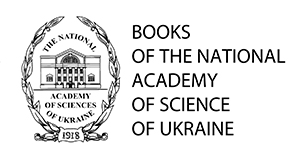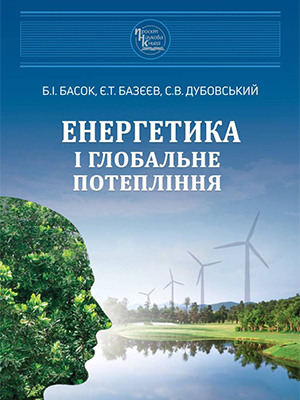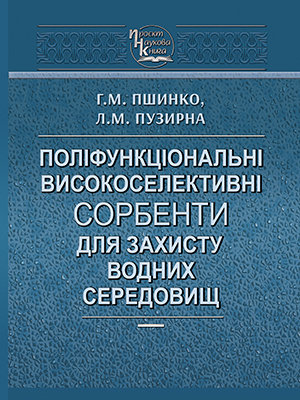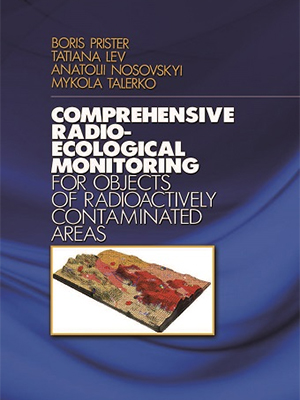Authors:
A.L. Bricks
Institute of Geological Sciences of NAS of Ukraine, Kyiv
ORCID: https://orcid.org/0000-0001-5048-1437
M.S. Ognianik
Institute of Geological Sciences of NAS of Ukraine, Kyiv, UA
ORCID: https://orcid.org/0000-0002-9394-1242
Reviewers:
Yevhenii Yakovliev
Institute of Telecommunications and Global Information Space of NAS Ukraine: Kyiv, UA
ORCID: https://orcid.org/0000-0001-6562-401
Dmitri Bugai
Institute of Geological Sciences of NAS of Ukraine, Kyiv, UA
ORCID: https://orcid.org/0000-0002-2404-5639
Affiliation:
Project: Scientific book
Year: 2024
Publisher: PH "Naukova Dumka"
Pages: 144
DOI:
https://doi.org/10.15407/978-966-00-1952-2
ISBN: 978-966-00-1952-2
Language: Ukrainian
How to Cite:
Abstract:
. Pollution of the geological environment with lost oil products has become a global problem. Since the mid-1980s, studies of oil pollution of the environment have been most widely conducted in the United States: in almost all universities, specialized centers and laboratories at oil-producing companies. It is not surprising that in foreign publications devoted to the theoretical and practical aspects of the problem of oil pollution, English-language texts and terminology prevail. On the other hand, the existing terminological package on oil pollution problems in Ukraine should be recognized as scarce due to the limited development of the corresponding scientific direction during the times of the former Soviet Union.
This glossary is a collection of terms directly or indirectly associated with the study and management of oil pollution of the geological environment, supplemented by interpretations, notes, illustrative material. The number of terms compared to the first edition has been increased to 280. The definition of terms is illustrated by 35 figures and supplemented by five tables. Each term is translated into English. For ease of reference book, the directory has alphabetical lists of Ukrainian terms and their English-language counterparts.
Students and teachers of the ecological-hydrogeological direction of training can use it. This dictionary will also be useful for hydrogeologists and specialists engaged in studying foreign experience in solving problems of remediation of geological environment contaminated with oil products.
It should be noted that, taking into account the specificity of the oil production sphere, terms directly related to the pollution of the geological environment during the development of oil fields were deliberately not included in this dictionary.
Keywords:
Geological environment, Area of oil pollution, Types of congeries of oil pollutants, Conceptual site model, Light non-aqueous phase liquid (LNAPL), Properties of LNAPLs, Behavior of LNAPLs, Remediation measures, Remedial technologies, Determination of LNAPLs content
References:
Busby, R., Rolston, D.E., Lenhard, R.J, & Rolston, D.E. (1995). An investigation of saturation-capillary pressure relations in two- and three-fluid systems for several NAPLS in different porous media. Ground Water. V. 33, (4). P. 570-578.
CL:AIRE. (2014). An illustrated handbook of LNAPL transport and fate in the subsurface. London. https://claire.co.uk/LNAPL
EPA Definitions. https://kgs.uky.edu/kgsweb/datasearching/water/epaDefinitions.htm
FRTR. Glossary. (б. д.). https://www.frtr.gov/optimization/default.htm
Huntley, D., Hawk, R.N., & Corley, H.P. (1994). Non-aqueous phase hydrocarbon in a fine-grained sandstone, (1) Comparison between measured and predicted saturations and mobility. Journal of Ground Water, V. 32, n. 4.
ITRC. Glossary. https://rmcs-1.itrcweb.org/glossary/
ITRC. (2009). Evaluating LNAPL Remedial Technologies for Achieving Project Goals. LNAPL-2. D.C.: Interstate Technology & Regulatory Council, LNAPLs Team. https://clu-in.org/download/remed/ITRC-LNAPL-2.pdf
ITRC. (2018). LNAPL Site Management: LCSM Evolution, Decision Process, and Remedial Technologies. LNAPL-3. D.C.: Interstate Technology & Regulatory Council, LNAPLs Team. https:// lnapl-3.itrcweb.org/3-key-lnapl-concepts/?print=pdf
Pickell J.J., Swanson B.F., & Hickman W.B. (1966). Application of Air-Mercury and Oil-Air Capillary Pressure Data in the Study of Pore Structure and Fluid Distribution. SPE Journal, 6(1). P. 55-61.
Schwille F. (1988). Dense Chlorinated Solvents in Porous and Fractured Media: Model Experiments. Lewis Publishers.
Sethi R., & Di Molfetta A. (2019). Transport of Immiscible Fluids. In Groundwater Engineering. Springer. P 249-262.
Technical Report 34. (2015). A practitioner’s guide for the analysis, management and remediation of LNAPL. CRC for CARE. Adelaide, Australia. https //www.crccare.com/ publications/technical-reports
TCEQ, Risk-Based NAPL Management. https://texashistory.unt.edu/ark:/67531/metapth624593
57USEPA. (2005). A decision-making framework for cleanup of sites impacted with light non-aqueous phase liquids (LNAPL). DC. https://www.epa.gov/sites/default/files/2015-04/documents/ decisionframework.pdf









